×


We have detected your country as:
Please click here to go to the USA website or select another country from the dropdown list.
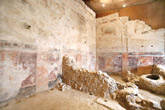
{image_1}Two years ago, we published an article about new discoveries made at the Herodium, the conical fortress built by first-century King Herod near Bethlehem. One of the finds was King Herod’s private theater with a royal box at the top in the center of a group of rooms. Last summer, even more was revealed about this box (8 x 7 meters, 26 x 23 feet) that doubtless hosted the king, his close friends, and family members during performances.
Continue Reading »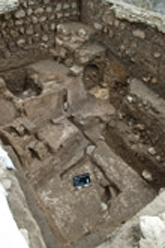
{image_1}An 1,800 year-old bathing pool that was probably part of a bathhouse used by the Roman Tenth Legion was exposed in excavations by the Israel Antiquities Authority (IAA) where a new men’s mikveh (ritual bath) is to be built in the Jewish Quarter of the Old City of Jerusalem.
Continue Reading »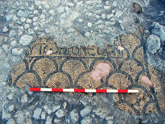
{image_1}
A third Samaritan synagogue was discovered in Beit She’an, south of the Sea of Galilee. Built at the end of the fifth century AD, it was used until the Muslim conquest in 634. The floor of its rectangular hall (5 x 8 meters, 16 x 26 feet) is covered in a colorful mosaic, in the center of which is a Greek inscription that says, “This is the temple.”
Continue Reading »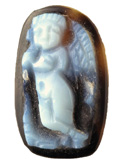
{image_1}
Unearthed in the parking lot opposite the City of David, this 2,000-year-old cameo of two layers of semi-precious onyx stone bears the image of Cupid.
Continue Reading »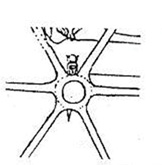
{image_1}
Sometimes it takes years to identify finds from an archaeological excavation. One such unidentified piece was found in 1997, when excavators unearthed what they believed to be Harosheth Hagoyim (in central Israel), the hometown of Sisera, the Canaanite commander of Judges 4 in the Bible. It was a small (2 cm. or 0.8 in. in diameter) round bronze “tablet” with a carved face of a woman wearing a cap and earrings shaped like chariot wheels.
Continue Reading »{image_1}
Excavations being carried out at Tel Kedesh, near the Lebanese border, have revealed an extremely rare 2,200-year old gold coin. Minted in Alexandria by Ptolemy V in 191 BC, it bears the name of the wife of Ptolemy II, Arsinoe Philadephus (II).
Continue Reading »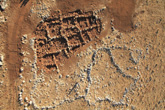
{image_1}
An intriguing find that is fascinating the archaeologists was exposed in archaeological excavations at Ramat Razim, southeast of Safed [overlooking the Sea of Galilee]. The excavations were carried out within the framework of the development of the region in which new neighborhoods, commercial areas, and a medical school are due to be built.
Continue Reading »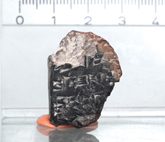
{image_1}
A tiny clay fragment, which contains the oldest written document ever found in Jerusalem, was found in excavations outside its Old City walls led by archaeologist Dr. Eilat Mazar. The 14th-century BC find is believed to be part of a tablet from a royal archives, which testifies to the importance of Jerusalem as a major city in the Late Bronze Age long before its conquest by King David.
Continue Reading »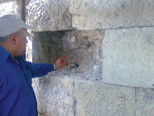
{image_1}
Although this wasn’t an ancient find, it was, indeed, an unusual one. The Israel Antiquities Authority conservation team working near Damascus Gate in Jerusalem was dismantling fragments of a crushed stone when they discovered a fist-size chunk of metal in the core of the wall.
Continue Reading »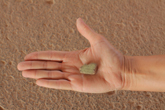
{image_1}
For the first time in Israel, a document has been uncovered containing a law code that parallels portions of the famous 18th-century BC Code of Hammurabi, which was found in Iran over 100 years ago. The Israel code, also dating to the 18–17th centuries BC, was found in Hebrew University archaeological excavations this summer at Hazor in northern Israel. The fragments, written in Akkadian cuneiform script, refer to issues of personal injury law relating to slaves and masters. The laws also reflect, to a certain extent, biblical laws of the type of “a tooth for tooth.”
Continue Reading »All logos and trademarks in this site are property of their respective owner. All other materials are property of Bridges for Peace. Copyright © 2024.
Website Site Design by J-Town Internet Services Ltd. - Based in Jerusalem and Serving the World.